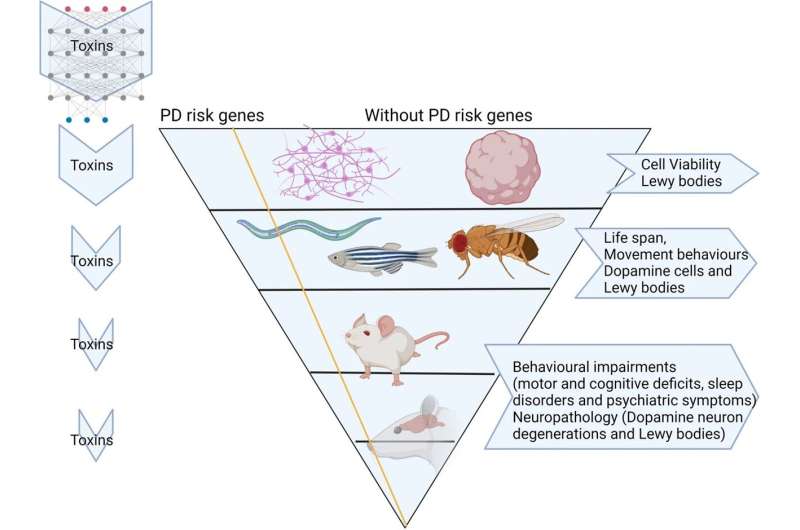This article has been reviewed according to Science X's editorial process and policies. Editors have highlighted the following attributes while ensuring the content's credibility:
fact-checked
peer-reviewed publication
trusted source
proofread
A step-by-step approach for testing pesticides for their possible role in Parkinson's disease

There is increasing evidence that pesticides play a role in the development of Parkinson's disease. But these substances are not sufficiently tested for their possible role in this disease. Researchers from the Netherlands Institute for Neuroscience, among others, propose a step-by-step testing approach that should guarantee the safety of pesticides.
Parkinson's disease is the fastest-growing brain disorder in the world. It is clear that environmental factors, such as air pollution and exposure to heavy metals, play an important role in the development of Parkinson's disease.
In addition, there is increasing evidence that pesticides are involved, but these substances are not adequately tested for their possible role in Parkinson's disease. Researchers from the Netherlands Institute for Neuroscience, Radboud University Medical Center, and the RIVM want to change this. They present a systematic testing approach for pesticides that minimizes animal suffering as much as possible.
Four test phases
The researchers propose that both existing and new pesticides go through four testing phases. Firstly, database research must show whether there are indications that a substance could cause damage to brain cells. If so, laboratory research on the effects of the pesticide on brain cells should be performed.
If researchers find indications of undesirable properties in those experiments too, they must test the substances in animal species that bear little resemblance to humans, such as worms or flies. The final step involves exposing mice and rats to the pesticide.
Brain researcher Judith Homberg from Radboudumc explains this step-by-step approach, "This way, we test the pesticides very thoroughly, without needing a large number of laboratory animals. Unfortunately, research on rats and mice is necessary to definitively determine the safety of a substance. Parkinson's disease is diagnosed based on behavioral changes, and these animals exhibit behavior that is relevant to this disease."
"We can also expose these laboratory animals to pesticides for a long period of time and in a similar way to humans. For example, by adding these substances to drinking water or to the air that they inhale."
Clear plan
Neurologist and co-author Bas Bloem (Radboudumc) emphasizes the importance of the tests, "We are still largely in the dark about the safety of these substances. The current admission criteria for pesticides provide insufficient insight into the risk of Parkinson's and other brain diseases. We now propose a clear plan of action to properly assess safety."
The researchers are now entering into discussions with industry and regulatory authorities. Ling Shan Ph.D. (researcher at the Netherlands Institute for Neuroscience in the group of Dick Swaab) says, "This test is just a first step to systematically and effectively screen pesticides."
"The aim is to subsequently implement this as a routine screening for other toxic substances in the environment. The next step is to conduct the experiments, in which we have to collaborate with national partners, such as universities and the RIVM."
The findings are published in the journal npj Parkinson's Disease.
More information: Ling Shan et al, Towards improved screening of toxins for Parkinson's risk, npj Parkinson's Disease (2023). DOI: 10.1038/s41531-023-00615-9



















